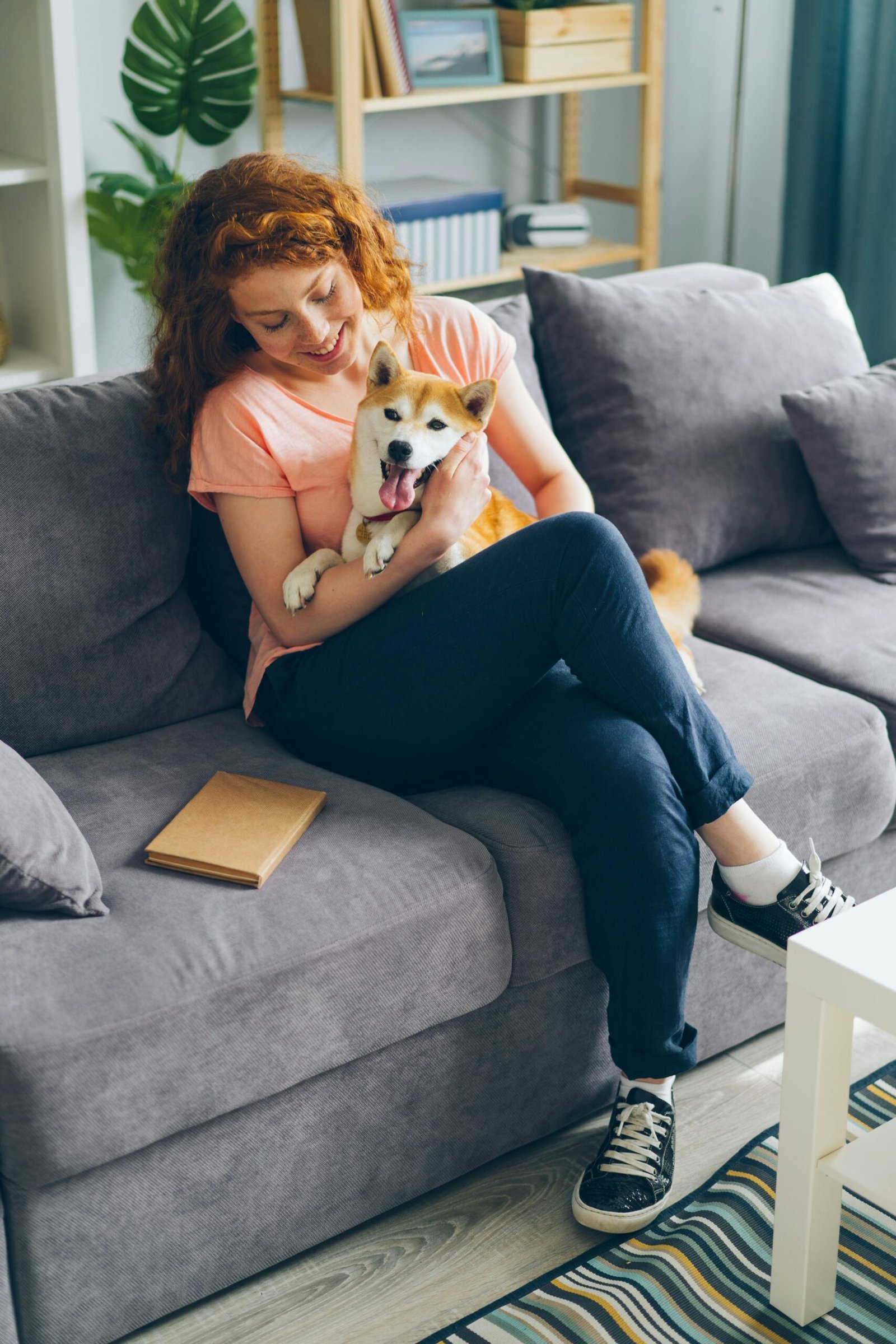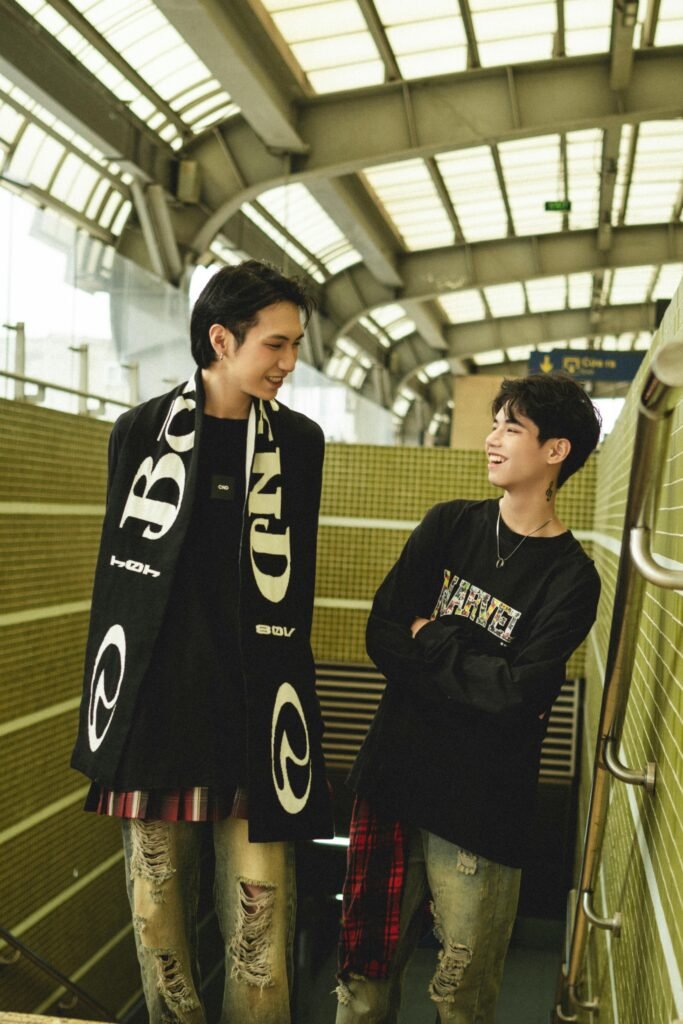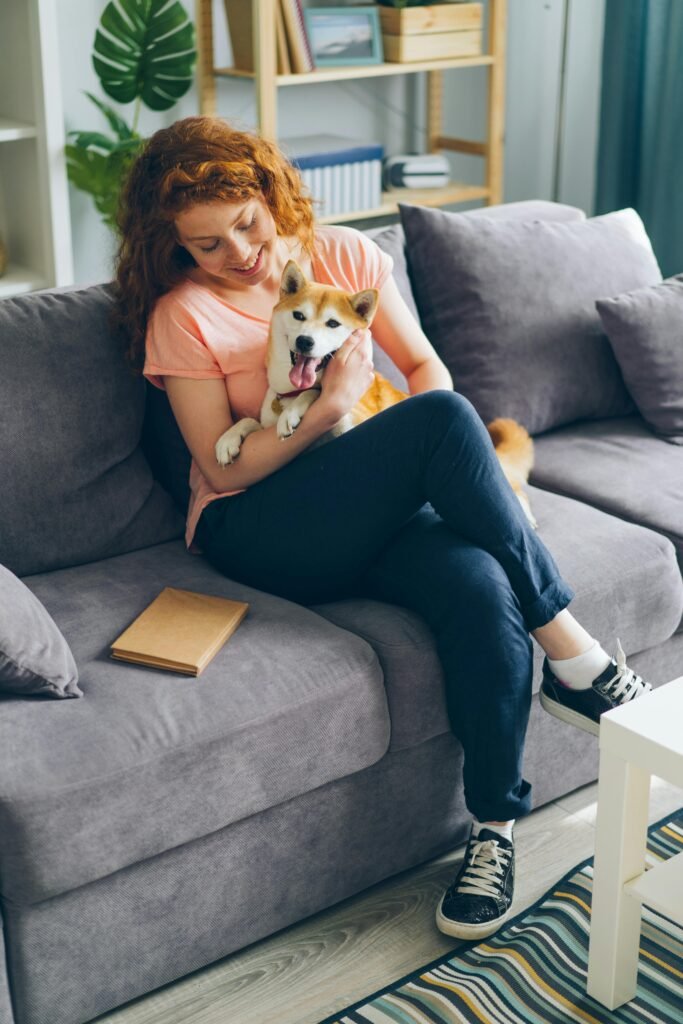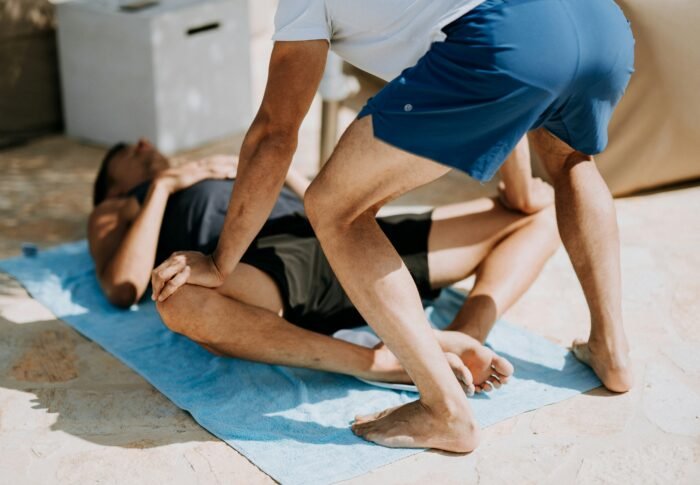
Mastering Obedience Training with These Helpful Tips
Are you a pet owner who is looking to improve your furry friend’s behavior? Look no further! In this article, you will discover a wealth of helpful tips to master obedience training. From basic commands to advanced techniques, these tips are guaranteed to transform even the most mischievous pup into a well-behaved companion. Get ready to embark on an exciting journey of bonding and communication with your four-legged friend!

This image is property of images.pexels.com.
Find products like these on Amazon!
Starting Early
When it comes to puppy training, starting early is key. It is never too early to begin teaching your furry friend the basic principles of obedience. By starting early, you can establish good habits and behaviors right from the beginning, setting a strong foundation for your dog’s future training. Puppy training not only helps prevent behavioral problems but also instills discipline and understanding in your pet.
Puppy Training
Puppy training involves teaching your new furry companion various commands and behaviors that will help them become a well-mannered and obedient member of the family. This includes teaching them basic commands such as sit, stay, come, and lie down. Along with these commands, crate training and potty training are also essential aspects of early puppy training. Consistency and positive reinforcement play a vital role in shaping your puppy’s behavior and ensuring successful training sessions.
Socialization
Socialization is a crucial aspect of obedience training and plays a vital role in shaping your dog’s behavior around other animals and people. Introducing your puppy to different environments, sounds, smells, and situations from an early age helps them build confidence, reduce fear, and develop proper social skills. Providing positive experiences during socialization helps your pet feel comfortable and relaxed in various settings, making them a well-adjusted and obedient companion.
Basic Commands
Teaching your dog basic commands is essential for their safety and well-being. Commands such as sit, stay, come, and lie down are not only useful in day-to-day life but also ensure your dog’s obedience in potentially dangerous situations. Consistency is key when teaching these commands – use the same verbal cues and hand signals each time you give a command. Through positive reinforcement and patience, your dog will learn to respond to these commands reliably, making your life easier and their life happier.
Establishing Leadership
As a dog owner, it is crucial to establish yourself as the leader of the pack. Dogs are naturally pack animals, and they look to their owners for guidance and direction. By establishing leadership, you create a sense of structure and security for your furry friend, which is crucial for their obedience and overall well-being.
Consistency
Consistency is vital when establishing yourself as the leader. Dogs thrive on routine and clear boundaries. Set consistent rules and expectations for your pet, and make sure all family members are on the same page. Consistency in your actions, commands, and rewards will help your dog understand what is expected of them and reinforce the leadership role you play in their life.
Confidence
Confidence is another essential aspect of establishing leadership. Your pet looks to you for guidance, and if you display confidence and assertiveness, they will feel secure and more likely to listen and obey. Confidence does not mean harshness or aggression; rather, it means projecting a calm and assertive energy that your dog can trust and respect.
Clear Communication
Clear communication is the key to effective leadership. Dogs rely on verbal and non-verbal cues to understand us. Use clear and concise command words, such as “sit” or “stay,” and pair them with consistent hand signals. Dogs are incredibly perceptive to body language, so remember to project calm and assertive energy while giving commands. By communicating clearly and effectively, you establish a strong foundation for obedience training.
Find products like these on Amazon!
Positive Reinforcement
Positive reinforcement is a powerful and effective training technique that rewards your dog for desired behaviors, making them more likely to repeat those behaviors in the future. This method focuses on encouraging and rewarding good behavior rather than punishing bad behavior. By using positive reinforcement, you create a positive and enjoyable learning environment for your pet.
Rewards and Treats
Using rewards and treats is a classic form of positive reinforcement. When your dog displays a desired behavior or successfully follows a command, reward them with a small treat or a verbal praise. This positive association encourages them to repeat the behavior in the future, as they associate it with something enjoyable. Treats should be used sparingly and gradually phased out as your dog becomes more reliable in their obedience.
Clicker Training
Clicker training is another effective positive reinforcement technique that utilizes a clicker to mark desired behaviors. The clicker makes a distinct sound that signals to your dog that they have performed the correct behavior. Pair the click with a reward, such as a treat or affection, to reinforce the behavior. Clicker training helps create a clear and immediate association between the behavior and the reward, making the learning process more efficient.
Praise and Affection
Along with treats and clicker training, praise and affection are essential forms of positive reinforcement. Dogs crave love and attention from their owners, and praising them verbally or through physical affection such as petting or belly rubs can be highly motivating for many canines. Whenever your dog displays good behavior or follows a command correctly, make sure to shower them with praise and affection. This positive reinforcement helps strengthen the bond between you and your furry friend while reinforcing their obedience.
Desensitization and Distraction
Desensitization and distraction training techniques are crucial for teaching your dog to remain calm and focused in various situations. By gradually exposing your pet to different stimuli and increasing distractions, you can help them develop resilience and self-control.
Exposure to Various Stimuli
Puppies and dogs need exposure to various stimuli to become well-rounded and obedient pets. Introduce them to different sounds, sights, smells, and environments gradually. For example, take them on car rides, walks in the park, or even to pet-friendly events to expose them to different people and animals. This exposure helps your pet become familiar with the world around them, reducing fear or anxiety that can lead to disobedience.
Gradual Increase in Distractions
Once your dog has mastered basic commands in a controlled environment, gradually increase the level of distractions during training sessions. Start with low-level distractions, such as mild noises or mild movements, and work your way up to more challenging distractions. This gradual progression helps your dog learn to focus and obey commands even when surrounded by distractions, making them more reliable in real-life situations.
Calm and Focused Behavior
Desensitization and distraction training aim to teach your dog to remain calm and focused regardless of the situation. Encourage your pet to maintain a relaxed and attentive state while exposed to various stimuli or distractions. Reward them for their calm behavior and redirect their attention to you or a specific task. Over time, your dog will learn to stay focused on you and rely on your cues, even in the presence of distractions.

This image is property of images.pexels.com.
Using Commands Effectively
Using commands effectively is essential for clear and efficient communication with your dog. By following a few key principles, you can ensure that your commands are understood and followed by your pet.
One Word Commands
When giving commands, keep them simple and concise. Use one-word commands that are clear and easy to understand, such as “sit,” “stay,” or “come.” Dogs respond better to short and straightforward commands and can quickly identify the intended action. Consistency is crucial here as well, ensuring that everyone in your household uses the same command words for each behavior.
Firm and Authoritative Tone
The tone of your voice plays a significant role in how your dog perceives and responds to your commands. Use a firm and authoritative voice to convey confidence and leadership. Dogs are more likely to respond to commands given in a strong and commanding tone rather than a soft or timid tone. However, it is important to note that firm does not mean aggressive or harsh – strive for a balanced, assertive tone that conveys authority without intimidation.
Consistent Signals and Cues
Along with verbal commands, dogs also rely on non-verbal cues to understand what is expected of them. Pair your verbal commands with consistent hand signals or gestures to create a stronger association between the command and the desired behavior. For example, when giving the “sit” command, hold your hand up with your palm facing upward. This consistency in signals and cues helps your dog understand and respond to your commands more accurately.
Training Games and Activities
Making training sessions fun and engaging for both you and your dog is crucial for maintaining enthusiasm and focus. Incorporating games and interactive activities into your training routine not only reinforces obedience but also strengthens the bond between you and your four-legged companion.
Hide and Seek
Hide and seek is a great training game that helps reinforce the “come” command while adding an element of excitement. Start by having someone hold your dog’s attention while you hide somewhere within your home or yard. Once hidden, call out your dog’s name followed by the command “come.” When they find you, reward them with a treat or praise. This game not only helps sharpen their recall skills but also adds an element of fun to their training.
Tug of War
Tug of war is a classic game that can be used to teach your dog impulse control and reinforce the “drop it” command. Start by choosing a tug toy and engaging in a gentle game of tug. When you are ready to end the game, use the “drop it” command and wait for your dog to release the toy. Once they let go, reward them with praise or a treat. Playing tug of war provides mental and physical stimulation, as well as teaching your dog to follow commands while having fun.
Interactive Toys
Interactive toys are a great way to keep your dog mentally stimulated while reinforcing obedience. Toys such as treat-dispensing puzzle toys or interactive feeding bowls require your dog to follow commands or solve problems to access their reward. By using these toys during training sessions, you can make learning more engaging and rewarding for your pet.

This image is property of images.pexels.com.
Avoiding Common Mistakes
When it comes to obedience training, it is important to avoid common mistakes that can hinder your dog’s progress and negatively impact their training experience. By being aware of these mistakes, you can ensure that your training sessions are effective and enjoyable for both you and your furry friend.
Lack of Patience
Training a dog requires patience and consistency. It is essential to understand that the learning process takes time, and your dog may not grasp a command on the first try. Avoid becoming frustrated or losing your temper – this can create a negative association with training for your pet. Instead, celebrate small victories and progress, and be patient with your dog as they learn and grow.
Inconsistency in Training
Consistency is key when it comes to training your dog. Inconsistency can lead to confusion, as your dog won’t know what is expected of them. Make sure to use the same command words, signals, and rewards each time you train. This consistency helps your pet understand and retain the information more effectively and promotes better obedience.
Punishment-based Methods
Using punishment-based methods, such as physical discipline or harsh corrections, can do more harm than good in obedience training. These methods can lead to fear, anxiety, and even aggression in your dog. Positive reinforcement, on the other hand, promotes a strong bond, trust, and motivation in your dog while achieving the desired behaviors. Focus on rewarding good behavior instead of punishing bad behavior to create a positive and enjoyable training environment.
Seeking Professional Help
Sometimes, enlisting the help of a professional dog trainer can benefit both you and your furry friend. A professional trainer can provide expert guidance, personalized training plans, and address specific behavioral issues that you may be facing with your dog.
Finding a Good Trainer
When seeking professional help, it is important to find a reputable and experienced dog trainer. Look for trainers who use positive reinforcement techniques, have a good understanding of canine behavior, and have a strong track record of success. Ask for recommendations from other dog owners or consult with your veterinarian for referrals. Remember to interview potential trainers to ensure they align with your training goals and values.
Enrolling in Obedience Classes
Enrolling your dog in obedience classes can be a great way to enhance their training skills and provide socialization opportunities. Obedience classes offer structured training sessions led by professional trainers, allowing you to learn alongside other dog owners in a supportive and controlled environment. These classes cover various aspects of obedience training, including basic commands, socialization, and managing common behavioral issues.
Private Training Sessions
If your dog has specific behavioral issues or requires more individual attention, private training sessions may be a suitable option. Private training sessions are tailored to address your dog’s specific needs and focus on addressing any behavior concerns you may have. This one-on-one attention allows for a more personalized and intensive training experience, ensuring that your dog receives the specialized guidance they require.
Managing Frustration
Training a dog can be challenging at times, and it is normal to feel frustrated or overwhelmed during the process. However, it is essential to manage these emotions effectively to maintain a positive training experience for both you and your dog.
Staying Calm and Positive
Dogs are highly sensitive to their owners’ emotions, and they can pick up on frustration or stress. It is crucial to stay calm and positive during training sessions, as this energy will help create a relaxed and enjoyable learning environment. Take deep breaths, maintain a positive mindset, and remember that training takes time.
Taking Breaks
If you find yourself becoming frustrated or your dog seems overwhelmed, it is important to take breaks during training sessions. Give yourself and your dog some time to recharge and relax before continuing. Breaks allow both of you to reset and approach training with a fresh mindset, preventing burnout and enabling more productive sessions.
Seeking Support
If you are feeling overwhelmed with the training process, don’t hesitate to seek support from fellow dog owners, friends, or family. Joining online forums or social media groups for dog owners can provide a supportive community where you can ask questions, share experiences, and gain valuable insights. Remember, you are not alone in your journey, and seeking support can make the training process more enjoyable.
Continued Practice and Reinforcement
Obedience training is an ongoing process that requires consistent practice and reinforcement. By incorporating training into your daily routine and maintaining consistency, you can ensure that your furry friend retains their training and continues to grow in their obedience skills.
Daily Training Sessions
Set aside dedicated time each day for training sessions with your dog. Whether it’s a few minutes or a more extended session, regular practice is crucial for reinforcing learned behaviors and introducing new commands. Short and frequent sessions are more effective than occasional lengthy sessions, as dogs tend to have shorter attention spans.
Repeating Commands
Continued repetition is key when it comes to obedience training. Practice previously learned commands regularly to reinforce your dog’s understanding and response. This repetition helps solidify the desired behaviors and ensures that your pet remains obedient in a variety of situations.
Consistency in Expectations
Consistency in your expectations is just as important as consistency in training sessions. Make sure that your dog understands and follows the same rules and commands in different environments and situations. By setting consistent expectations, you foster a sense of reliability and obedience in your furry friend, making them a well-behaved companion wherever you go.
In conclusion, obedience training is a valuable investment in your relationship with your dog and their overall well-being. By starting early, establishing leadership, using positive reinforcement, desensitizing to stimuli, and employing effective commands, you can lay the foundation for a well-mannered and obedient companion. Incorporating training games and activities, avoiding common mistakes, seeking professional help when needed, managing frustration, and practicing consistent reinforcement will ensure that your dog’s training journey is successful and enjoyable for both of you. Remember, training is a lifelong process, and with patience, consistency, and a positive mindset, you can master obedience training and create a harmonious bond with your furry friend.
Find products like these on Amazon!







-
-
1 day
Tagged behavior modification, Techniques, tips